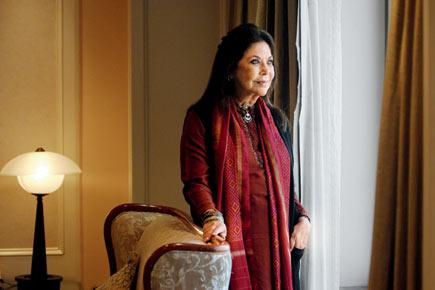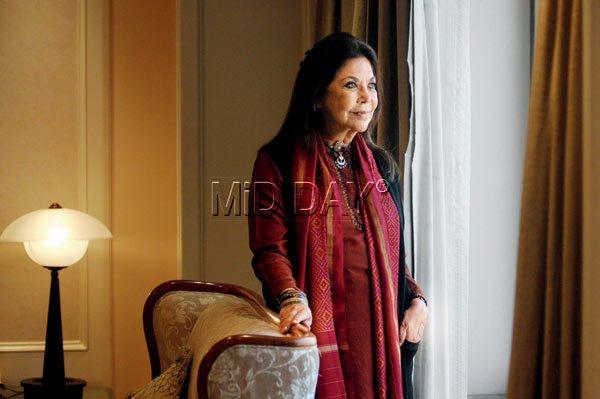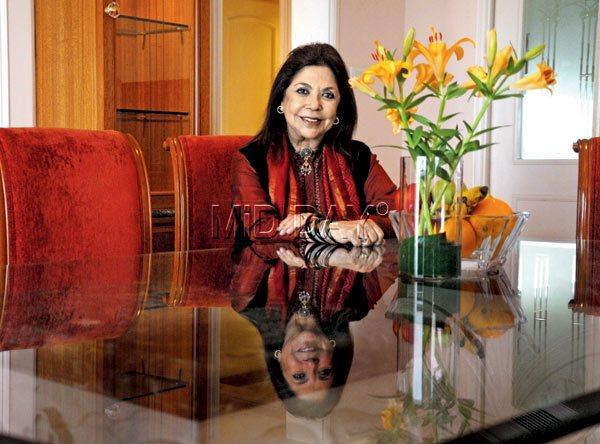The veteran designer tells Nikshubha Garg about her successful journey, her pillars of strength and a fervent desire to overhaul Indian handlooms

Ritu Kumar, Owner and Founder, Ritu Kumar label
ADVERTISEMENT
Within minutes of meeting designer Ritu Kumar at a suburban five-star hotel one afternoon, I know this — if one has the passion to indulge their dream, age is just a number.
Kumar is in Mumbai for a day, I learn, and her schedule is choc-a-bloc. Yet, not an ounce of fatigue is writ on her face. “I enjoy every bit of this,” she smiles.

Dressed elegantly in a black long skirt and a silk kurta, the ace designer exudes ageless charm. Her beginnings were humble —she was born in 1944 in Amritsar, to a joint family, surrounded by affectionate aunts and uncles always ready to care of the children in the house. However, the lack of good schools in Amritsar back then prompted the designer to move to Simla where she studied at the Loreto Convent Tara Hall.
“My childhood memories are split between the comfort of home and the serene mountains of Shimla,” recalls the 70-year-old. She then went on to study Home Science and Bachelors of Education at Lady Irwin College in Delhi. It was there that she met her husband, Shashi Kumar, through his sister who was her classmate. “Was it love at first sight? I don’t think so. It took a while. He lived in Calcutta and was in the family business. I guess what attracted me towards him was his sophistication and our mutual interest in books,” smiles the designer.
That Kumar is ambitious is clear — a journey that started with a few workers and two tables in a small room has culminated into 14 stores all over the country. Its roots, she says, were laid by her “very broad-minded” family. Unlike some parents in the ’60s, who rarely thought of educating daughters, let alone support their career choices, Kumar’s family conditioned her to become independent. “My parents and grandparents were highly educated and believed in imparting it, too. I was never given a choice otherwise,” she remembers. “I think I had the perfect combination of parents. My father was very ambitious for me academically, so I could discuss careers with him, whereas my mother and I shared a great emotional bond,” smiles the septuagenarian.
After graduating in 1964, she earned a scholarship to Briarcliff College in the US where she studied Theatre and History of Art. She returned to India in 1966 retrospective of how little she knew about Indian art and heritage. She married in Kolkata (then Calcutta) shortly after and soon enrolled herself in Ashutosh Museum of Indian Art to study museology. “I discovered various forms of dying embroideries and prints which gave me an insight to a world I had never seen before,” she explains.
Destiny’s child
In spite of a degree in art and museology, Kumar admits that getting involved with textiles came by sheer accident. “I stumbled upon a village called Serampore, a former Dutch colony on the outskirts of Calcutta, where their indigenous art of printing had been systematically wiped out by the British. There was so much talent there, hindered by the lack of employment opportunities — there wasn’t any retail space around, which was killing that rich heritage. I got interested, designed a few blocks and the workers printed a few sarees using them. That’s how my first set of sarees came out. Pure accident,” recalls the designer.

When she is not working, Ritu Kumar indulges in reading, watching films and travelling the country to discover places and activities that are unheard of. Pics/Satyajit Desai
Soon, one thing led to another and the workers began seeing a ray of hope for their art by producing printed sarees for Kumar. Soon, they produced enough work, and she held her first exhibition at the Park Hotel in Calcutta. “To my surprise, the sarees sold well and I opened a small retail space later,” she elaborates, adding that she later visited museums across the world to find printing blocks and passed them on to the workers to try them out. The business expanded slowly but steadily.
The road to success is never easy, believed Kumar, especially when you are treading a path where you do not have a repertoire for reference. “The 150 years of British rule had created an art vacuum of sorts in the country. I had no books to refer to, no musuems to visit. It was a void waiting to be filled,” she recalls. However, the designer had the patience and determination to keep going and success came to her the hard way. “I remember, during my third exhibition of sarees, which were centred around Uttar Pradesh’s blocks and prints, I sold only two sarees over two days, which were bought by sympathetic friends. I didn’t know what had gone wrong, since I had researched about UP blocks and prints thoroughly. It was later that it struck me that I had put the prints on khadi, which made the sarees rather bulky. This incident taught me how to combine fabrics and prints,” she explains, adding that such lessons cannot be taught at any fashion school and have to be learnt on the job.
Life’s designs
Kumar believes that she couldn’t have accomplished what she has today had it not been for her husband and two sons, Ashvin and Amrish. While she credits her husband for making the business commercially successful with his business background, she emphasises upon her children’s support as she tried to balance home and work. “My sons would accompany me to all the site visits because we wanted to be together. My heart goes out to every working mother. The balancing act is a nightmare,” she says.
Kumar vividly remembers one time, when she and her husband were in Paris for orders. “My younger son, Amrish, was four years old then and was running high fever. My heart sank and I couldn’t imagine leaving him behind, but couldn’t afford to not go to Paris and incur loss. I left the children with my parents, and I have never felt so guilty,” she adds.
The designer’s journey has spanned 45 years and the fashion industry has seen a sea change over this time. Kumar, as a part of this vibrant space, believes in mentorship and a broader success of the industry that goes beyond economical. With so many young designers on the block who are experimentative, does Kumar feel threatened? “Honestly, I am at that stage in my life where I feel that young designers should only be encouraged. Nowhere in the world does any country have an indigenous fashion handwriting anymore. It’s totally dictated by Euro-centric fashion, owned and sold by multinationals and designed by a dozen fashion houses. In such a scenario, we are probably the only country where people wear their own clothes. So, when it comes to competition, it isn’t between the designers of this country but to maintain our identity amongst the various international brands,” explains the couturier.
Kumar, a philomath
When she is not working, Kumar indulges in a variety of activities. She likes to study history and textiles, travel the country and discover places and activities that have never been written about. She also listens to music and watches films. While Indian classical music is one she prefers most, she is fond of both Bollywood and Hollywood films. “I am a lover of classics such as Mughal-E-Azam, Pakeezah, Gone with the Wind and older Bond movies. Amongst the newer films, I quite liked 2 States. I think it was a lot of fun,” she guffaws.
As much as Kumar loves the aforementioned activities, family time is equally important to her. “The four of us take two trips in a year. It helps us bond as a family. My only regret has been not being able to spend enough time with my children while they were growing up. I am making up for it now,” says the doting mother.
Having achieved so much in life, the fire in her remains bright. “I still want to do something towards the handloom sector. There is much unemployment there. I also want to write my second book — the first being Costumes and Textiles of Royal India — which will talk about my enriching experiences while I travelled across the country. Hopefully, it will benefit the coming generations,” she explains.
Talk about her fashion favourites and her face lights up. “There are so many. From Audrey Hepburn, to Rekha and Priyanka Chopra. I admire all of them for different aspects. I wish I could choose,” she signs off with a laugh.
 Subscribe today by clicking the link and stay updated with the latest news!" Click here!
Subscribe today by clicking the link and stay updated with the latest news!" Click here!






